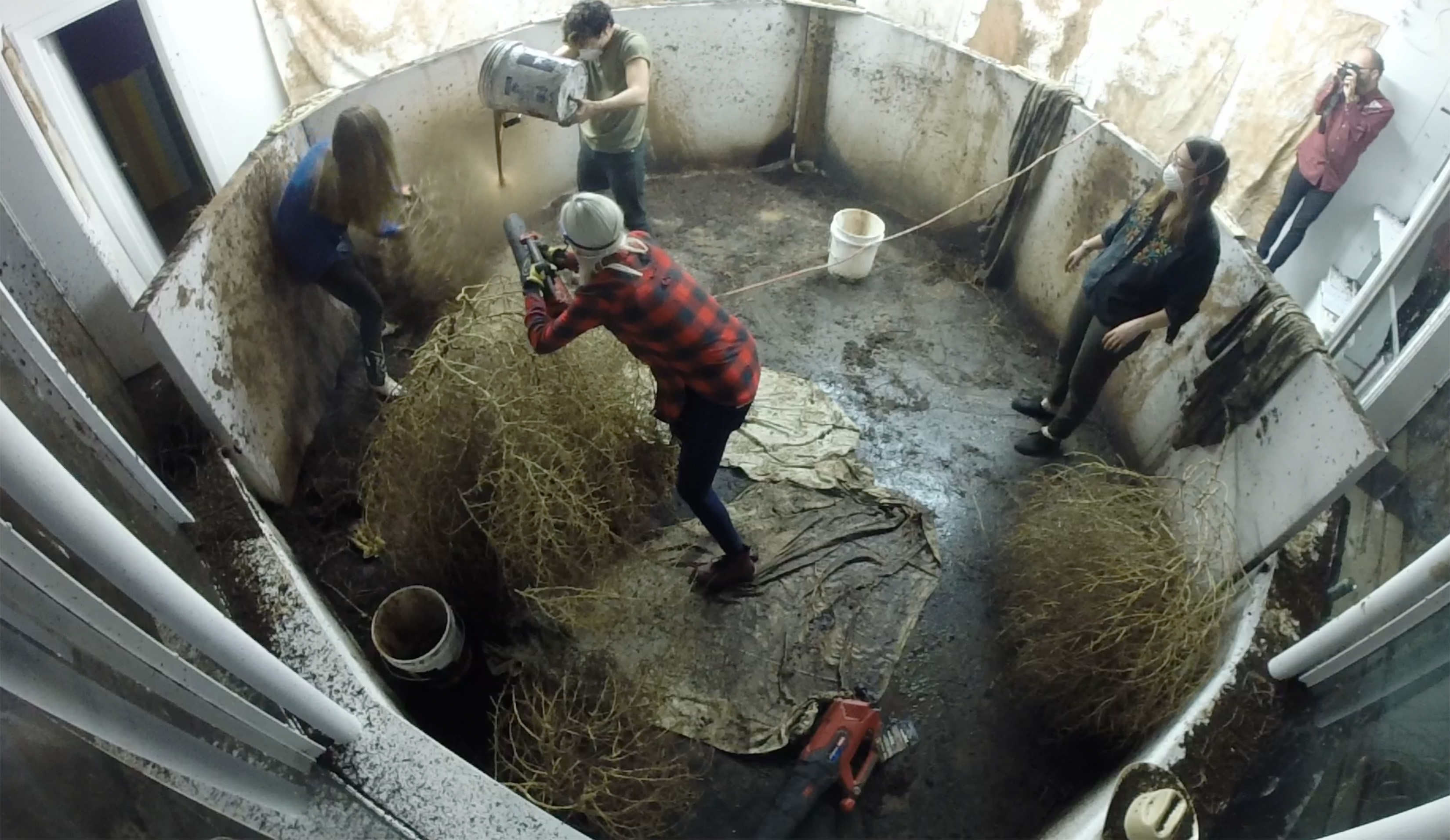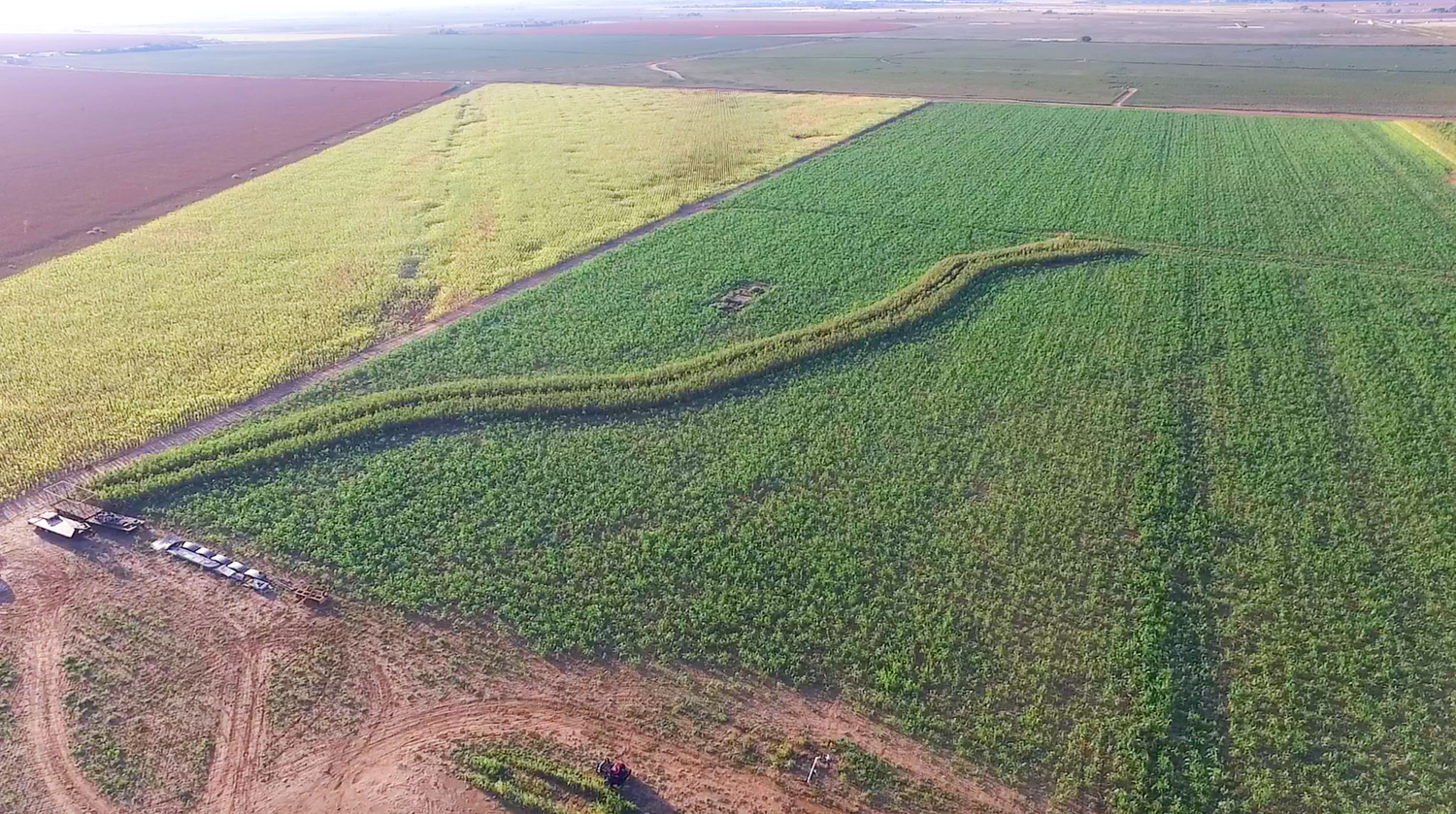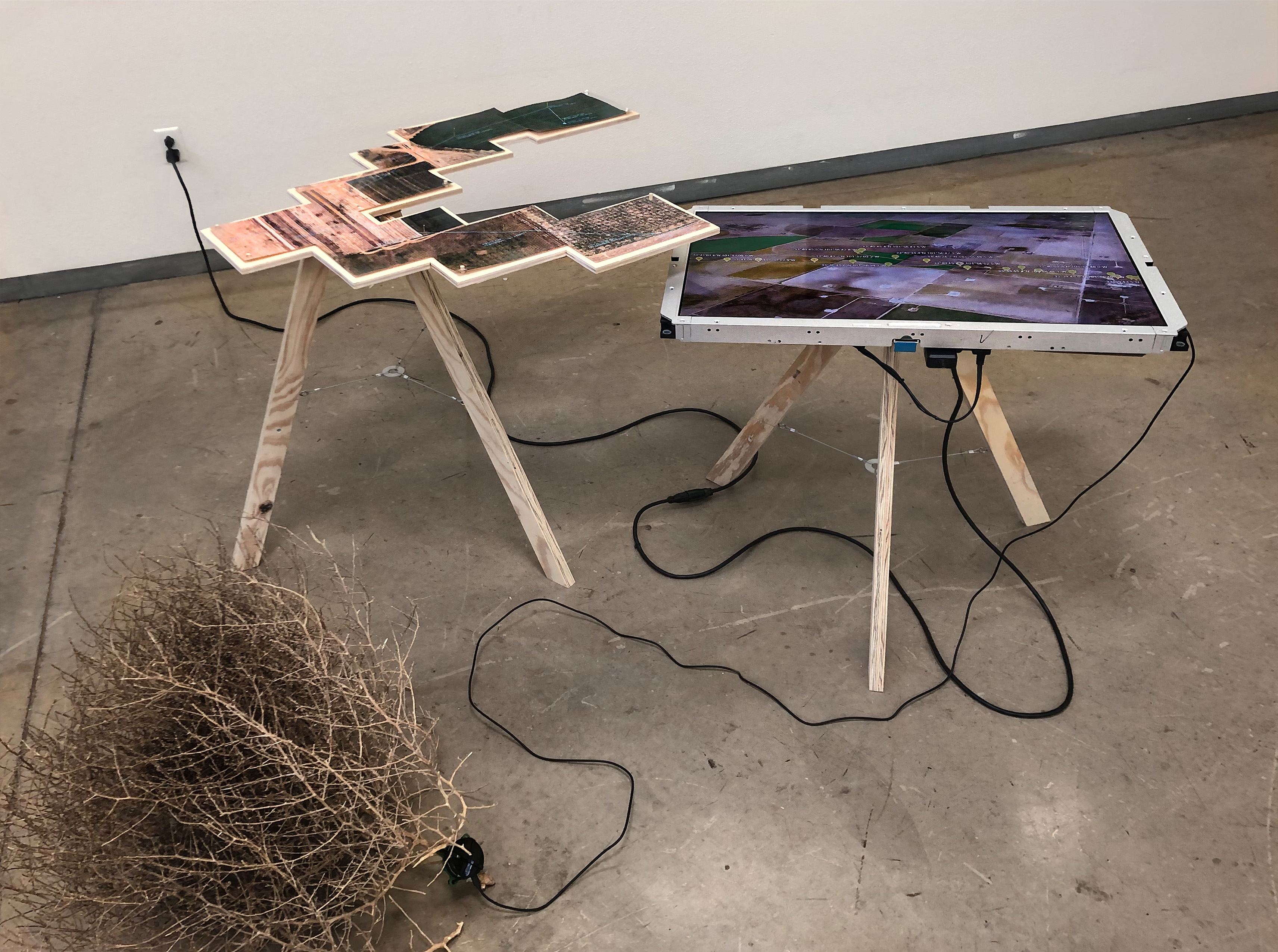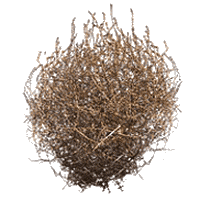1 Alicia Inez Guzmán, “Tumbleweed Snowman Lives,” New Mexico Magazine, December 2018, Link.
2 Naomi W. Cohen, “The Abrogation of the Russo-American Treaty of 1832,” Jewish Social Studies 25, no. 1 (1963): 3–41.
3 Kelly Buchanan, “The Impact of Russian Laws on US-Russia Economic Relations,” Custodia Legis (blog), Library of Congress, August 16, 2012, Link.
4 Nuwer, “America’s Tumbleweeds Are Actually Russian Invaders,” Link.
5 Sidney Stevens, “Everything You Ever Wanted to Know About Tumbleweeds,” Treehugger, February 7, 2022, Link.
6 Matthew Kerns, Texas Jack: America’s First Cowboy Star: America’s First Cowboy Star (Twodot, Mt: TwoDot, 2021), 28.
7 Benjamin Sutton, “Val Kilmer Denies Copyright Infringement in Lawsuit over Bronze Tumbleweed,” Artsy, May 9, 2019, Link.
8 “Batman-Turned-Artist Faces Copyright Lawsuit,” Art Law & More (blog), May 14, 2019, Link.
9 Same Tree, “The Native Chandelier - Rustic - Chandeliers - by Same Tree,” Houzz, accessed June 13, 2023, Link.
10 Barbara Will, “The Nervous Origins of the American Western,” American Literature 70, no. 2 (1998): 293–316, https://doi.org/10.2307/2902839.
11 Texas A&M Agrilife Extension, “Russian Thistle, Tumbleweed,” Plants of Texas Rangelands, accessed June 13, 2023, Link.
12 Nuwer, “America’s Tumbleweeds,” Link.
13 “Nuclear Waste: DOE’s Efforts to Protect the Columbia River from Contamination Could Be Further Strengthened,” U.S. Government Accountability Office, August 28, 2006, Link.
14 Linda Ashton, “Radioactive Tumbleweeds Create Latter-Day Red Menace in Washington,” Los Angeles Times, April 15, 2001, Link.
15 Sarah Zhang, “How Tumbleweeds Spread Radiation From Old Nuclear Sites,” Gizmodo, January 28, 2014, Link.
16 Hills Snyder, “Circle Drivin’,” Glasstire (blog), April 13, 2023, Link.
17 William D. Pattison, Beginnings of the American Rectangular Land Survey System, 1784-1800 (Chicago, The University of Chicago, 1957), 11.
18 Steve Jansen, “Sarah Aziz + J. Eric Simpson,” Southwest Contemporary, February 25, 2022, Link.
19 Ivan Watson, “Refugees Caught in the Middle of Georgia-Russia Tensions,” CNN, August 26, 2010, Link.
20 Masha Gessen, “Putin’s Draft Order Has Inspired a Russian Exodus,” The New Yorker, October 5, 2022, Link.
Sarah Aziz
In the American Southwest, nothing is as iconic and insidious as the humble tumbleweed. Spaghetti Westerns have immortalized them as the harbingers of inactivity and emptiness. Year after year, several American cities such as Midland, TX, Albuquerque, NM, and Thousand Oaks, CA, mound them to create larger-than-life roadside effigies.1 However, the romantic image of a tumbleweed clumsily rolling through a silent Western town obscures the plant’s agenda, which is: to destroy the biosphere and create unimaginable ecological devastation.
The second iteration of the Russian-American Commercial Treaty was ratified in 1832 under the auspices of President Andrew Jackson.2 Signed against the backdrop of the Monroe Doctrine—President James Monroe’s 1823 suppression of colonization to protect the United State’s sphere of influence from European forces—the agreement provided general bilateral trading rights between the US and the Russian Empire until it was repealed nine years later because of Russia’s discriminatory immigration policies.3 During this tumult, the tumbleweed, also known as Russian thistle (salsola tragus), was smuggled into the US by Russian sailors hiding them in their clothes, sacks of flaxseed, and other agricultural exports.4 As tensions between the two states grew over questions of citizenship, territory, and militarism, America’s second invasion took hold. The colonial plant species began displacing its native counterparts, irrevocably altering the American Southwest.
![Screenshots of Tumbleweeds for Sale on Etsy, 2023]()
By the late 1800s, European settlers had removed millions of acres of native flora and enacted agricultural practices incompatible with the colonized landscapes.5 The disturbed ground, persistent winds, and evolution of the railway allowed the ruderal weed to rapidly migrate across the U.S. and, unexpectedly, the tumbleweed became an integral part of the country’s developing identity. Traveling theatrical productions, such as Soldier Buffalo Bill Cody’s Wild West Show, created nostalgic and isolationist renditions of the American West using tumbleweed, live buffalo, cowboys, and mestizo and indigenous peoples, making the plant became synonymous with the American frontier.6 Once again, the tumbleweed raises questions of identity, agency, and ownership through its role in contemporary art and consumerism. In 2018, actor Val Kilmer became embroiled in legal disputes when he was accused of plagiarizing artist Terry Bale Allen's bronze tumbleweed creations.7 Kilmer dismissed Allen’s suit as harassment, claiming the sculptures lacked the “requisite originality for copyright protection.”8 To complicate matters further, a burgeoning market for tumbleweeds has cropped up on eBay, Etsy, Instagram, and Facebook in recent years, with retail prices up to $2988.9 The forced migration of tumbleweeds from the American Southwest to suburban homes worldwide offers consumers a packaged, simulated version of the American West and its “curative powers.”10
The life cycle of a tumbleweed begins with seed germination from late winter to early spring. In its nascent stages, the plant is an edible reprieve in its arid adopted territories. As a summer annual — a plant that lives and dies in one growing season — a tumbleweed plant can grow rapidly into a verdant green bush that reaches towering heights of up to six feet.11 By early fall, it transitions into senescence, then desiccates and disconnects from the ground, transforming into a formidable wind-propelled seed-sowing machine capable of producing around 250,000 progenies. Each tumbleweed can travel several miles before disintegrating. Its cyclic dispersion and aggressive propagation strategies have earned it the moniker “Russian invader.”12 The latter was particularly troubling during the Cold War at the U.S. Department of Energy’s Hanford plutonium manufacturing complex in Washington state — the country's most contaminated nuclear waste site.13 With taproots that reach down as far as twenty feet into the ground, tumbleweeds are extraordinary hyperaccumulators that can absorb harmful radionuclides such as strontium and cesium.14 They were the first plant to grow back after aboveground atomic testing ceased and quickly became one of the most uncontainable biological vectors, contaminating other areas.15
![A crew removes tumbleweeds the size of compact cars from a slope in East Los Angeles, 2014]()
![The Big I Tumbleweed Snowman in Albuquerque, NM, 2010]()
Tumbleweed Rodeo is an ongoing architectural project that excavates and exhibits the plant’s complicated legacies to identify how it helped construct a particular kind of American subjectivity in the Southwest. Through impromptu, Dadaesque performances and dinners, design-build projects, GPS-informed landscape drawings, and material explorations, the Rodeo reveals the social dimension of an ecological catastrophe that, when considered from a different perspective, isn’t all that bad. The plant intersects everything from President Thomas Jefferson's efforts to create a nation of yeoman farmers to President Herbert Hoover's control over wheat prices in World War I and Georgia's steppe biome degradation during the Russo-Georgian War. By tracing tumbleweeds’ movement from their place of origin to their host country, the slow commercialization of the American Southwest’s landscape comes into high relief. The plant symbolizes America’s reverence for resilient individualism and is a proxy for idealized renditions of the American frontier. It positions the question of invasive species (what came first, and what’s genuinely truly invasive?) not as disasters but as displays of the majesty of nature and progress. The Rodeo collaborates with artists, farmers, and ranchers from across the Great Plains and the South Caucus Region to represent the plant’s true impact on American identity and ecology. It asks the question of how we can partner with non-human actors without subjugating them to be in the service of humans, such as in the case of domesticating animals.
![Tumbleweed Rodeo Drawing Performance at CO-OPt Research + Projects in Lubbock, Texas, 2020]()
For the Tumbleweed Rodeo performances, Jack Craft and I, the project founders, transport 800 cubic feet of tumbleweed from the Llano Estacado across the Stakes Plains and Great Plains: first, we bring the tumbleweeds to CO-OPt Research + Projects, a DIY art space in Lubbock, Texas, and then we transport them to space p11, an underground gallery for experimental art and architecture in the Chicago Pedway. Using six custom-built canvases and electric leaf blowers, the rodeo pens simulate an unyielding tumbleweed tornado in the rodeo pens. The gallery floors are lined with West Texas dirt and water, providing an authentic backdrop for the tumbleweeds' wind-blown journey across the spaces.16 The plants’ muddy movements mark the canvases, capturing the relationship between drawing buildup and material breakdown, and viewers, who are primarily locals, volunteer to enter the maelstrom—dancing, roping, and wrangling with the tumbleweeds and each other. While in the exhibition, they share oral histories of the American West and recount anecdotes about their direct and indirect experiences with tumbleweed, such as relatives using them as makeshift mattresses during the Great Depression. The tumbleweed emerges as a formidable conversational tool, challenging societal taboos and soliciting a more nuanced understanding of the American narrative.
![Tumbleweed Landscape Drawing in Shallowater, Texas, 2021, Image by Eric J. Simpson]()
The Rodeo’s drawing experiments involve affixing live GPS trackers to tumbleweeds to trace their vectors of movement, which always appears contrary to the Jeffersonian grid—the 18th-century rectangular land survey system used in the early U.S. Republic to displace indigenous peoples.17 Alongside artist and farmer Eric Simpson, I create inhabitable landscape drawings that offer the public a new way to experience their environment. In 2021, we took a seven hundred and fifty-foot-long segment of a tracked tumbleweed's route on Eric's farm in Shallowater, Texas, and planted ten-foot-tall native plants along both sides.18 Within the line, activities such as dinners and tours can occur. Once migratory birds consume the drawing, a new version travels to an alternative site, such as Tbilisi, Georgia, for the 2022 Tbilisi Architecture Biennial. American tumbleweeds, equipped with tags, are released at two different locations. The first is a seventy-hectare former Soviet military garrison in Tbilisi with unclear ownership, and the second is the Tserovani Refugee Camp—a product of the 2008 Georgian-Russian war that, which displaced hundreds of thousands of people.19 The event coincided with the announcement of Vladimir Putin’s draft, prompting an enormous Russian emigration. 20 In this context, the project mirrors geopolitical dynamics and historical currents. At the former military base, the American tumbleweeds encountered their Russian counterparts; what was once estranged is now reunited.
![Tumbleweed Landscape Drawing Data at The Louise Hopkins Underwood Center for the Arts in Lubbock, Texas, Image by Eric J. Simpson]() The tumbleweed's transformation from an alien species to an iconic emblem of its adopted country offers insights into the evolution of American exceptionalism and expansionism. The plant’s paradoxical nature
—
being both intrusive and essential
—
asks new questions about indigeneity and invasiveness, bolstering contemporary discourses on reconstructions of American identity. Projects such as Tumbleweed Rodeo underscore the pivotal role non-human actors, like this misunderstood plant species, can play in shaping our cultural narratives.
The tumbleweed's transformation from an alien species to an iconic emblem of its adopted country offers insights into the evolution of American exceptionalism and expansionism. The plant’s paradoxical nature
—
being both intrusive and essential
—
asks new questions about indigeneity and invasiveness, bolstering contemporary discourses on reconstructions of American identity. Projects such as Tumbleweed Rodeo underscore the pivotal role non-human actors, like this misunderstood plant species, can play in shaping our cultural narratives.
Sarah Aziz is an Assistant Professor of Architecture at the University of New Mexico and an incoming PhD student at The Bartlett School of Architecture, UCL. Her background as a second-generation British Pakistani informs her research practice that maps patterns of migration across multiple scales and geographies, starting with her grandfather’s walk from Delhi to Lahore during the Partition of British India.
Aziz is a recipient of Art Omi, MacDowell, and UW-Milwaukee Fitzhugh Scott Innovation in Design Fellowships, and in 2023, she was awarded an Architectural League Prize with Lindsey Krug. She has held Visiting Professorships at the University of Colorado Denver as the inaugural Visiting Assistant Professor of Architecture with an Emphasis on Issues of Justice, Equity, Diversity, and Inclusion, and at Texas Tech University.
Humbleweeds
In the American Southwest, nothing is as iconic and insidious as the humble tumbleweed. Spaghetti Westerns have immortalized them as the harbingers of inactivity and emptiness. Year after year, several American cities such as Midland, TX, Albuquerque, NM, and Thousand Oaks, CA, mound them to create larger-than-life roadside effigies.1 However, the romantic image of a tumbleweed clumsily rolling through a silent Western town obscures the plant’s agenda, which is: to destroy the biosphere and create unimaginable ecological devastation.
The second iteration of the Russian-American Commercial Treaty was ratified in 1832 under the auspices of President Andrew Jackson.2 Signed against the backdrop of the Monroe Doctrine—President James Monroe’s 1823 suppression of colonization to protect the United State’s sphere of influence from European forces—the agreement provided general bilateral trading rights between the US and the Russian Empire until it was repealed nine years later because of Russia’s discriminatory immigration policies.3 During this tumult, the tumbleweed, also known as Russian thistle (salsola tragus), was smuggled into the US by Russian sailors hiding them in their clothes, sacks of flaxseed, and other agricultural exports.4 As tensions between the two states grew over questions of citizenship, territory, and militarism, America’s second invasion took hold. The colonial plant species began displacing its native counterparts, irrevocably altering the American Southwest.

By the late 1800s, European settlers had removed millions of acres of native flora and enacted agricultural practices incompatible with the colonized landscapes.5 The disturbed ground, persistent winds, and evolution of the railway allowed the ruderal weed to rapidly migrate across the U.S. and, unexpectedly, the tumbleweed became an integral part of the country’s developing identity. Traveling theatrical productions, such as Soldier Buffalo Bill Cody’s Wild West Show, created nostalgic and isolationist renditions of the American West using tumbleweed, live buffalo, cowboys, and mestizo and indigenous peoples, making the plant became synonymous with the American frontier.6 Once again, the tumbleweed raises questions of identity, agency, and ownership through its role in contemporary art and consumerism. In 2018, actor Val Kilmer became embroiled in legal disputes when he was accused of plagiarizing artist Terry Bale Allen's bronze tumbleweed creations.7 Kilmer dismissed Allen’s suit as harassment, claiming the sculptures lacked the “requisite originality for copyright protection.”8 To complicate matters further, a burgeoning market for tumbleweeds has cropped up on eBay, Etsy, Instagram, and Facebook in recent years, with retail prices up to $2988.9 The forced migration of tumbleweeds from the American Southwest to suburban homes worldwide offers consumers a packaged, simulated version of the American West and its “curative powers.”10
The life cycle of a tumbleweed begins with seed germination from late winter to early spring. In its nascent stages, the plant is an edible reprieve in its arid adopted territories. As a summer annual — a plant that lives and dies in one growing season — a tumbleweed plant can grow rapidly into a verdant green bush that reaches towering heights of up to six feet.11 By early fall, it transitions into senescence, then desiccates and disconnects from the ground, transforming into a formidable wind-propelled seed-sowing machine capable of producing around 250,000 progenies. Each tumbleweed can travel several miles before disintegrating. Its cyclic dispersion and aggressive propagation strategies have earned it the moniker “Russian invader.”12 The latter was particularly troubling during the Cold War at the U.S. Department of Energy’s Hanford plutonium manufacturing complex in Washington state — the country's most contaminated nuclear waste site.13 With taproots that reach down as far as twenty feet into the ground, tumbleweeds are extraordinary hyperaccumulators that can absorb harmful radionuclides such as strontium and cesium.14 They were the first plant to grow back after aboveground atomic testing ceased and quickly became one of the most uncontainable biological vectors, contaminating other areas.15


Tumbleweed Rodeo is an ongoing architectural project that excavates and exhibits the plant’s complicated legacies to identify how it helped construct a particular kind of American subjectivity in the Southwest. Through impromptu, Dadaesque performances and dinners, design-build projects, GPS-informed landscape drawings, and material explorations, the Rodeo reveals the social dimension of an ecological catastrophe that, when considered from a different perspective, isn’t all that bad. The plant intersects everything from President Thomas Jefferson's efforts to create a nation of yeoman farmers to President Herbert Hoover's control over wheat prices in World War I and Georgia's steppe biome degradation during the Russo-Georgian War. By tracing tumbleweeds’ movement from their place of origin to their host country, the slow commercialization of the American Southwest’s landscape comes into high relief. The plant symbolizes America’s reverence for resilient individualism and is a proxy for idealized renditions of the American frontier. It positions the question of invasive species (what came first, and what’s genuinely truly invasive?) not as disasters but as displays of the majesty of nature and progress. The Rodeo collaborates with artists, farmers, and ranchers from across the Great Plains and the South Caucus Region to represent the plant’s true impact on American identity and ecology. It asks the question of how we can partner with non-human actors without subjugating them to be in the service of humans, such as in the case of domesticating animals.

For the Tumbleweed Rodeo performances, Jack Craft and I, the project founders, transport 800 cubic feet of tumbleweed from the Llano Estacado across the Stakes Plains and Great Plains: first, we bring the tumbleweeds to CO-OPt Research + Projects, a DIY art space in Lubbock, Texas, and then we transport them to space p11, an underground gallery for experimental art and architecture in the Chicago Pedway. Using six custom-built canvases and electric leaf blowers, the rodeo pens simulate an unyielding tumbleweed tornado in the rodeo pens. The gallery floors are lined with West Texas dirt and water, providing an authentic backdrop for the tumbleweeds' wind-blown journey across the spaces.16 The plants’ muddy movements mark the canvases, capturing the relationship between drawing buildup and material breakdown, and viewers, who are primarily locals, volunteer to enter the maelstrom—dancing, roping, and wrangling with the tumbleweeds and each other. While in the exhibition, they share oral histories of the American West and recount anecdotes about their direct and indirect experiences with tumbleweed, such as relatives using them as makeshift mattresses during the Great Depression. The tumbleweed emerges as a formidable conversational tool, challenging societal taboos and soliciting a more nuanced understanding of the American narrative.

The Rodeo’s drawing experiments involve affixing live GPS trackers to tumbleweeds to trace their vectors of movement, which always appears contrary to the Jeffersonian grid—the 18th-century rectangular land survey system used in the early U.S. Republic to displace indigenous peoples.17 Alongside artist and farmer Eric Simpson, I create inhabitable landscape drawings that offer the public a new way to experience their environment. In 2021, we took a seven hundred and fifty-foot-long segment of a tracked tumbleweed's route on Eric's farm in Shallowater, Texas, and planted ten-foot-tall native plants along both sides.18 Within the line, activities such as dinners and tours can occur. Once migratory birds consume the drawing, a new version travels to an alternative site, such as Tbilisi, Georgia, for the 2022 Tbilisi Architecture Biennial. American tumbleweeds, equipped with tags, are released at two different locations. The first is a seventy-hectare former Soviet military garrison in Tbilisi with unclear ownership, and the second is the Tserovani Refugee Camp—a product of the 2008 Georgian-Russian war that, which displaced hundreds of thousands of people.19 The event coincided with the announcement of Vladimir Putin’s draft, prompting an enormous Russian emigration. 20 In this context, the project mirrors geopolitical dynamics and historical currents. At the former military base, the American tumbleweeds encountered their Russian counterparts; what was once estranged is now reunited.

Sarah Aziz is an Assistant Professor of Architecture at the University of New Mexico and an incoming PhD student at The Bartlett School of Architecture, UCL. Her background as a second-generation British Pakistani informs her research practice that maps patterns of migration across multiple scales and geographies, starting with her grandfather’s walk from Delhi to Lahore during the Partition of British India.
Aziz is a recipient of Art Omi, MacDowell, and UW-Milwaukee Fitzhugh Scott Innovation in Design Fellowships, and in 2023, she was awarded an Architectural League Prize with Lindsey Krug. She has held Visiting Professorships at the University of Colorado Denver as the inaugural Visiting Assistant Professor of Architecture with an Emphasis on Issues of Justice, Equity, Diversity, and Inclusion, and at Texas Tech University.
<-
